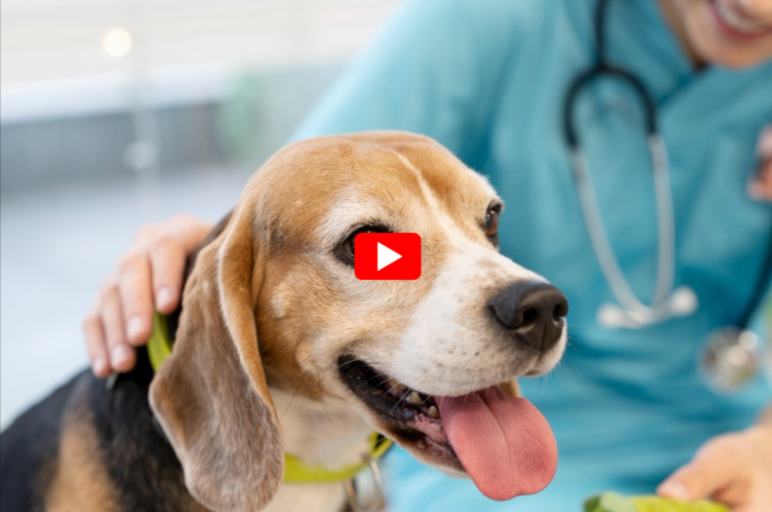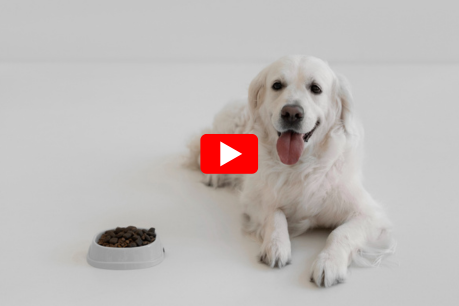Leptospirosis In Dogs: Causes, Symptoms, Prevention & Care
When it comes to the health and well-being of your dog, awareness about potential threats is crucial. One such dangerous, yet often overlooked, disease is Leptospirosis.
This bacterial infection affects both animals and humans (a zoonotic disease) and can have life-threatening consequences if not addressed promptly.
Leptospirosis in dogs is a serious bacterial disease spread by contaminated water or soil, causing fever, vomiting, and kidney or liver damage if untreated.
In this detailed guide, we’ll explore what Leptospirosis is, how it spreads, its signs and symptoms, treatment options, and effective prevention strategies for pet parents.
Leptospirosis In Dogs: A Complete Pet Owner’s Guide
When it comes to your dog’s health, being aware of potential diseases is essential. One of the lesser-known yet dangerous illnesses affecting dogs is Leptospirosis. It’s a serious bacterial infection that can be life-threatening if left untreated.
This disease also poses a risk to humans, making it even more important for pet owners to understand. In this detailed guide, we’ll break down what Leptospirosis is, how it spreads, its symptoms, treatment options, and ways to prevent it, ensuring your furry friend stays safe.
What Is Leptospirosis In Dogs?
Leptospirosis is an infectious disease caused by bacteria called Leptospira. These bacteria live in water and moist soil and can survive for weeks or months in the environment.
Dogs can contract this disease by coming into contact with infected water, soil, or urine from other animals. It primarily affects the liver and kidneys, but in severe cases, it can spread to other organs.
What makes Leptospirosis particularly concerning is that it’s a zoonotic disease, meaning it can also infect humans.
How Do Dogs Get Leptospirosis?
Dogs typically get infected by drinking, swimming in, or walking through contaminated water or muddy areas. The bacteria enter the dog’s body through mucous membranes like the eyes, nose, and mouth or through cuts and abrasions in the skin.
Common places where dogs might encounter Leptospira bacteria include ponds, lakes, puddles, and areas where wildlife like rodents, raccoons, or livestock roam. Dogs can also be exposed by coming into contact with urine from infected animals or contaminated surfaces.
Is Leptospirosis Contagious to Humans?
Yes, Leptospirosis is one of the few dog diseases that can also infect humans. Humans can contract the disease through direct contact with infected dog urine, contaminated bedding, soil, or water.
The bacteria enter the human body through cuts, abrasions, or mucous membranes. Symptoms in humans can range from mild flu-like signs to severe complications like liver and kidney failure.
That’s why it’s crucial to handle infected dogs and their waste carefully, using gloves and proper disinfectants.
Which Dogs Are Most At Risk?
While any dog can contract Leptospirosis, certain factors increase the risk. Unvaccinated dogs are naturally more susceptible.
Dogs that spend a lot of time outdoors, especially in rural, forested, or urban areas with standing water or wildlife, face higher exposure.
Working dogs like hunting breeds, farm dogs, and those living in flood-prone regions are especially vulnerable. Additionally, dogs that visit parks, hiking trails, or swim in natural bodies of water should be carefully monitored for signs of infection.
Diagnosing Leptospirosis In Dogs
Veterinarians diagnose Leptospirosis by evaluating your dog’s symptoms, exposure history, and conducting specific tests. Blood tests are typically performed to assess organ function and look for infection signs.
Urinalysis helps detect abnormalities in the kidneys. More specific tests include the Microscopic Agglutination Test (MAT), which identifies antibodies against the bacteria, and PCR tests, which detect the bacteria’s DNA in the blood or urine. Early diagnosis is crucial, as timely treatment greatly improves outcomes.
Treatment Options for Leptospirosis
If your dog is diagnosed with Leptospirosis, immediate treatment is necessary. The primary course of action is administering antibiotics like Doxycycline, which can effectively clear the infection.
Supportive care, including intravenous fluids, is used to manage dehydration and help flush out toxins from the kidneys and liver.
Dogs suffering from nausea may require anti-vomiting medications, while pain relievers and fever reducers can ease discomfort. Severe cases might need hospitalization for close monitoring, oxygen support, and additional medications.
How to Prevent Leptospirosis in Dogs
Preventing Leptospirosis starts with limiting your dog’s exposure to risk factors. Always avoid letting your dog drink from puddles, lakes, or stagnant water.
Steer clear of flood-prone or muddy areas where wildlife urine might be present. Keep your property clean and secure to reduce rodent populations.
Use leashes to maintain control when outdoors and prevent unsupervised roaming. Regularly disinfect areas where dogs may urinate, especially if multiple pets are in the household. Most importantly, ensure your dog is up-to-date with vaccinations.
Can Leptospirosis Be Cured?
Fortunately, Leptospirosis is treatable, especially when caught early. With prompt veterinary care and the right antibiotics, most dogs recover well.
However, severe cases can result in permanent kidney or liver damage, requiring long-term management. The prognosis largely depends on how quickly treatment is initiated after symptoms appear. Untreated, the disease can be fatal.
Recovery usually involves a few weeks of medication and follow-up tests to confirm the bacteria have been fully cleared from the body.
Leptospirosis In Dogs: Recovery and Home Care
After treatment, dogs recovering from Leptospirosis require attentive home care. Provide a quiet, clean environment and ensure they have access to fresh, clean water.
Stick to the medication schedule prescribed by your vet and avoid exposing your dog to other animals until cleared.
Clean and disinfect any areas contaminated with urine, using gloves and pet-safe disinfectants. Monitor your dog for lingering signs of illness, such as reduced appetite, excessive thirst, or fatigue, and report these to your veterinarian promptly.
Final Thoughts
Leptospirosis is a dangerous yet preventable disease that every dog owner should be aware of. By understanding the risks, recognizing symptoms, ensuring vaccination, and taking preventive steps, you can protect your beloved pet from this serious illness.
Early detection and treatment are key to a successful recovery. If your dog displays unusual symptoms or has been exposed to stagnant water or wildlife areas, consult your veterinarian immediately.



